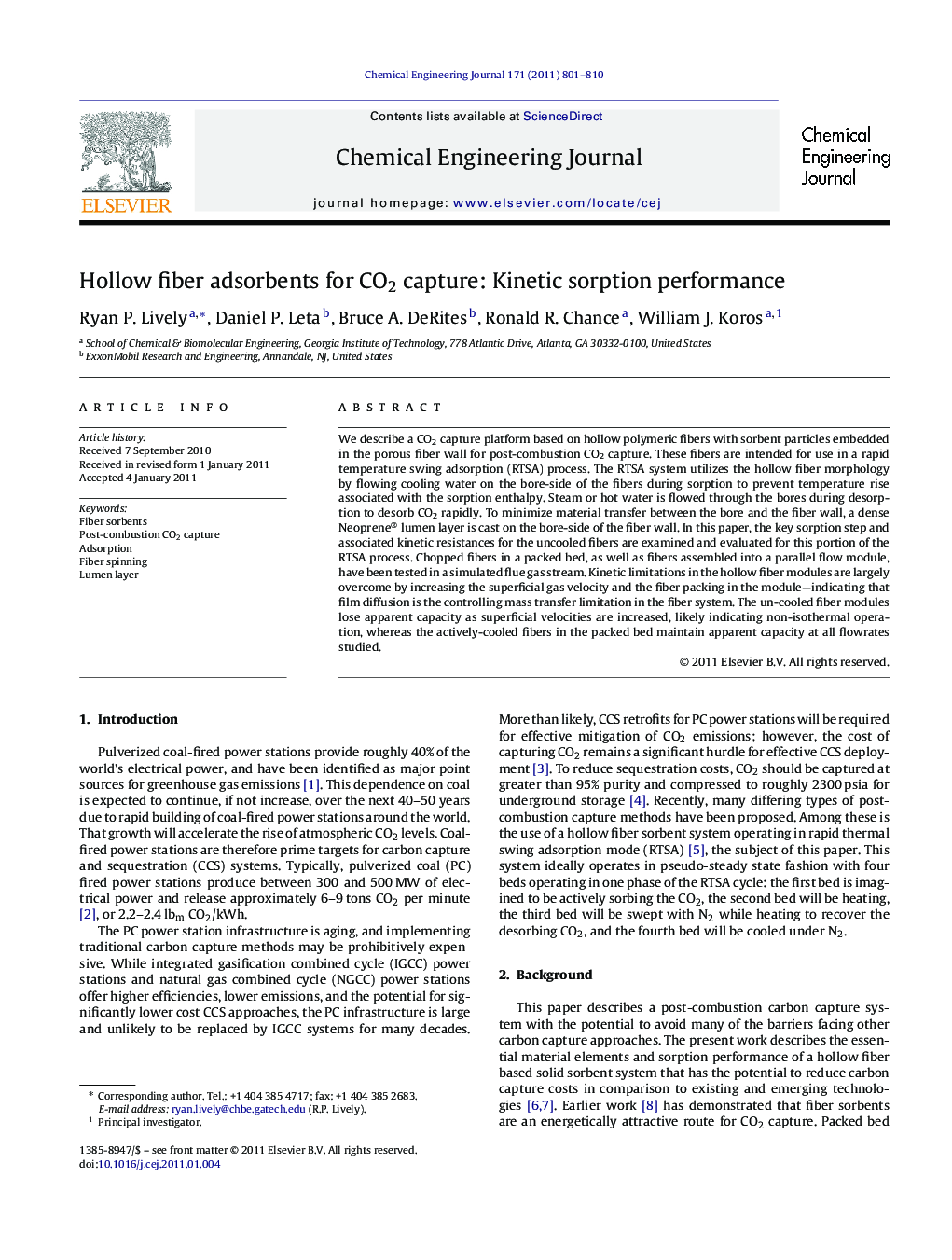| Article ID | Journal | Published Year | Pages | File Type |
|---|---|---|---|---|
| 150875 | Chemical Engineering Journal | 2011 | 10 Pages |
We describe a CO2 capture platform based on hollow polymeric fibers with sorbent particles embedded in the porous fiber wall for post-combustion CO2 capture. These fibers are intended for use in a rapid temperature swing adsorption (RTSA) process. The RTSA system utilizes the hollow fiber morphology by flowing cooling water on the bore-side of the fibers during sorption to prevent temperature rise associated with the sorption enthalpy. Steam or hot water is flowed through the bores during desorption to desorb CO2 rapidly. To minimize material transfer between the bore and the fiber wall, a dense Neoprene® lumen layer is cast on the bore-side of the fiber wall. In this paper, the key sorption step and associated kinetic resistances for the uncooled fibers are examined and evaluated for this portion of the RTSA process. Chopped fibers in a packed bed, as well as fibers assembled into a parallel flow module, have been tested in a simulated flue gas stream. Kinetic limitations in the hollow fiber modules are largely overcome by increasing the superficial gas velocity and the fiber packing in the module—indicating that film diffusion is the controlling mass transfer limitation in the fiber system. The un-cooled fiber modules lose apparent capacity as superficial velocities are increased, likely indicating non-isothermal operation, whereas the actively-cooled fibers in the packed bed maintain apparent capacity at all flowrates studied.
